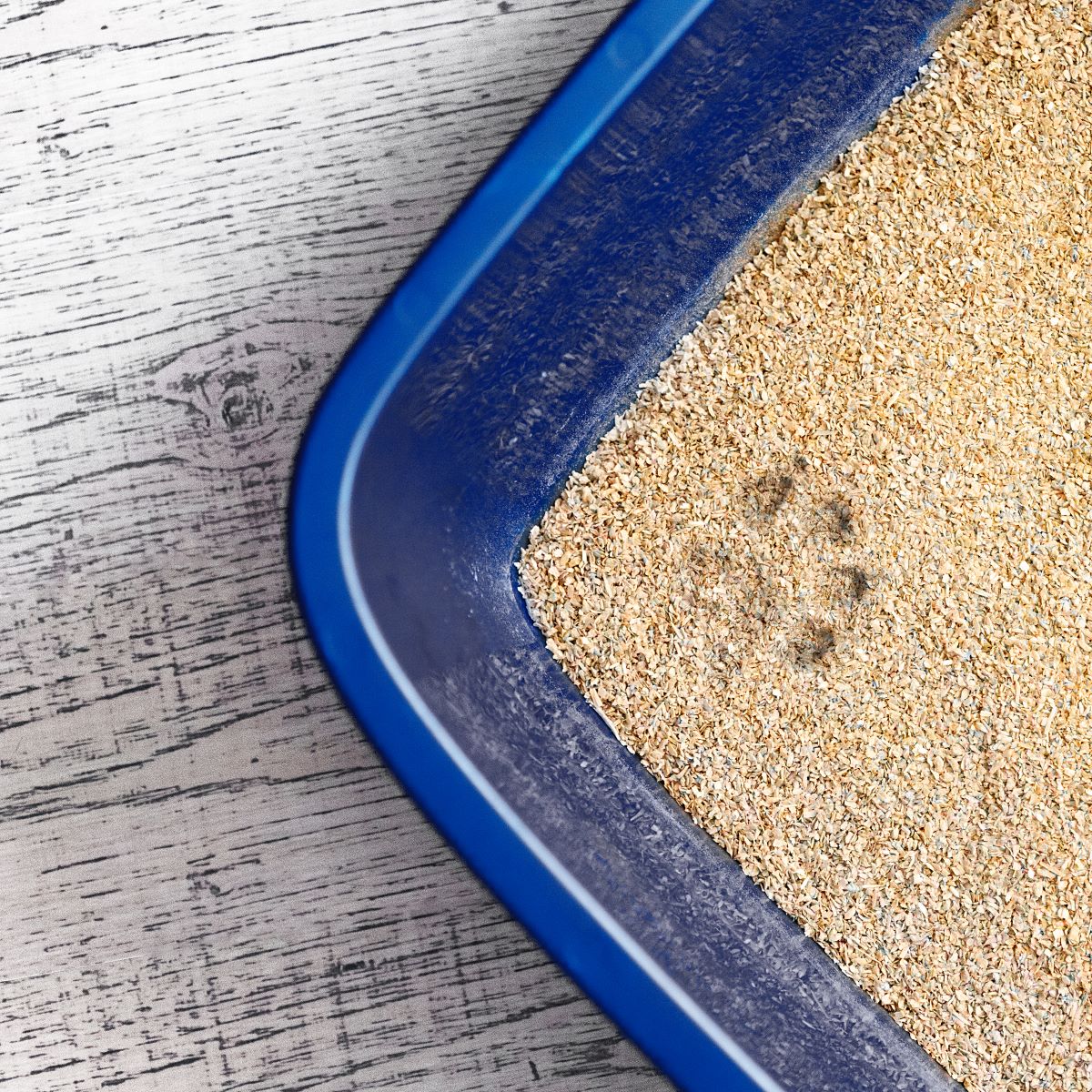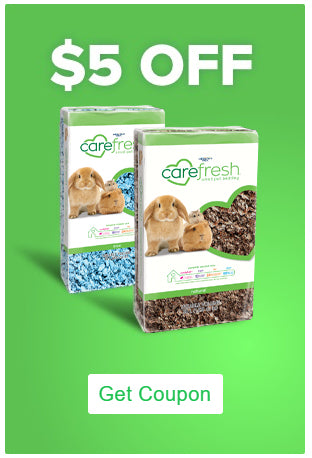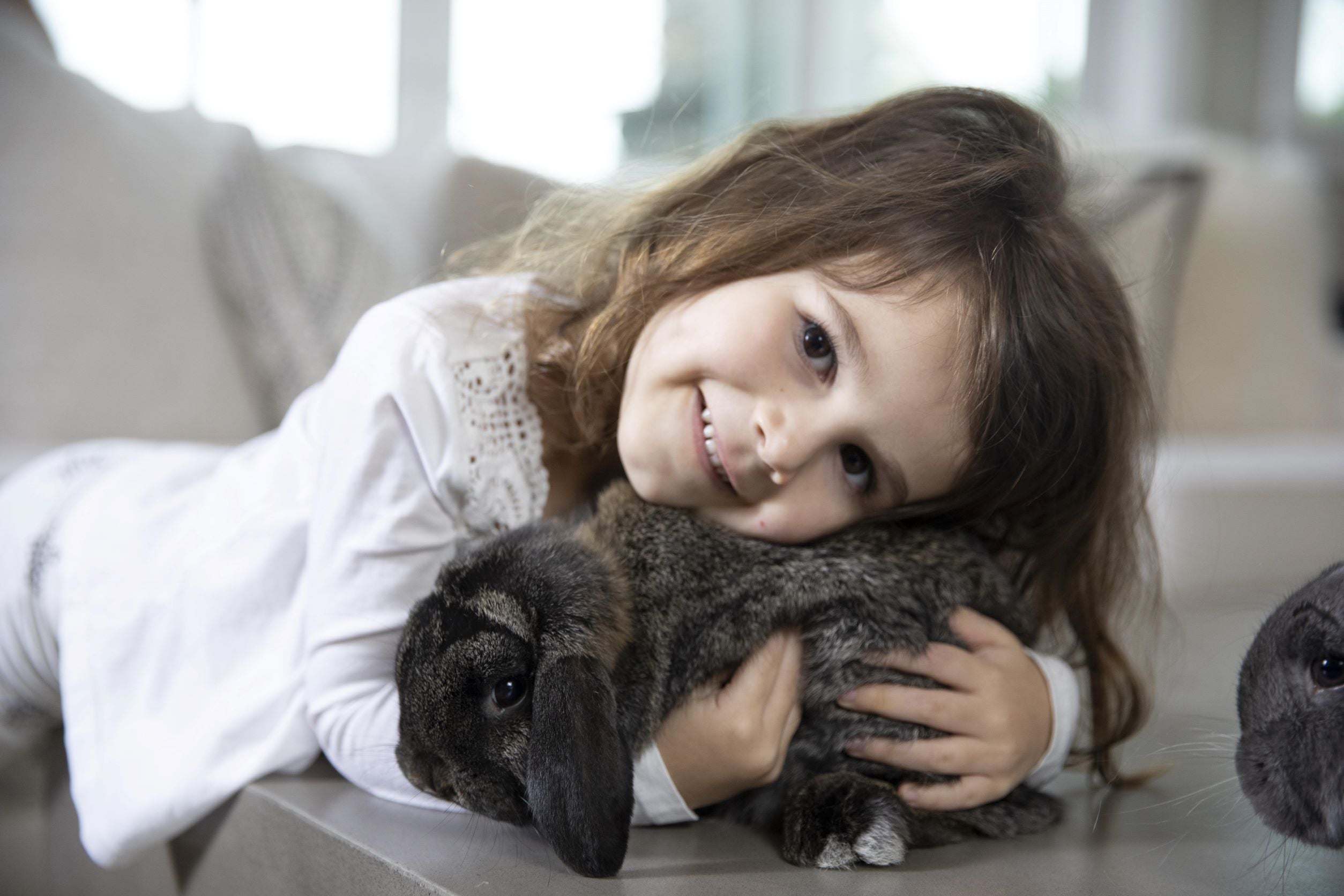🐾 Why Dust‑Free Bedding Matters for Your Small Pet’s Health
When it comes to caring for your small pets—whether it's a guinea pig, hamster, rabbit, or rat—bedding might seem like a simple choice. But one of the most important features you should look for is dust-free bedding. While soft textures and odor control are great, a low-dust formula can make a significant difference in your pet’s overall health and well-being.
1. Spare Their Sensitive Lungs
carefresh is 99% dust-free, thanks to its soft “comfyfluff™” natural paper fibers. Unlike wood shavings or straw that throw off harmful dust, carefresh keeps the airborne particles minimal—protecting tiny lungs from irritation and reducing risks of respiratory issues.
2. A Cleaner Habitat (and Easier for You)
With low dust comes less mess. No constant dust clouds on walls, food dishes, or toys means less cleaning. Plus, carefresh absorbs twice as much liquid as shavings, keeping bedding drier for longer and cutting down on complete cage clean-ups.
3. Safer, Softer, Happier
Made with no harsh dyes or chemicals, and being biodegradable, carefresh offers a gentle, eco-friendly solution. Its soft texture supports pets’ nesting, burrowing, and natural behaviors while comforting delicate feet and eyes.
4. Battling Smells with No Fuss
carefresh’s odor-control system can suppress ammonia smells for up to 10 days—meaning the cage stays fresh and fewer deep cleans are needed.
5. Backed by Happy Pet Parents
On Reddit, a hamster owner shared:
“I actually don't mind it at all! … he burrows in it like mad so he clearly enjoys it” (Reddit)Another added they’ve noticed recent batches are virtually dust-free--a real quality upgrade (Reddit).
💡 Care Tips for Best Results
Depth matters: Use 2–6 inches depending on your pet (hamsters vs. rabbits) for comfortable nesting.
Spot clean daily, full clean weekly—longer with carefresh's absorbency and odor control.
Store sealed and dry to preserve freshness and minimize any minimal dust release.
Introduce gradually, especially if switching bedding or colors.
Final Thoughts
Choosing carefresh 99% dust‑free bedding gives your pet a healthier, more comfortable environment—less dust, fewer odors, softer nesting, and supportive of vital instincts. It’s a small change with a huge impact on long-term wellbeing—for your pet and you.
Read MoreDIY Delights: Affordable Enrichment Ideas for Small Pet Parents
We love our pets and we want to spoil them, but providing them with all the treats, toys, and enrichment materials they deserve can really add up. Taking care of our furry friends doesn't have to break the bank, and we're here to show you how to provide engaging and delicious options for your small pets without going over budget.
So let’s dive into the world of homemade toys and treats and discover how to do it on a budget, with many materials and ingredients you likely already have on hand.
From the Yard:
We know our little critters love to gnaw on clean, untreated wood; it is a great enrichment activity and helps keep their chompers in check. And while it may be tempting to head to the backyard with your clippers, not all trees are safe for your small pet!
Things to consider:
Know your trees: Some trees are toxic to small pets! Apple, willow, and oak are generally safe, while cedar, yew, and stone-fruit trees are toxic. Wood from pine and fir trees is only safe after the wood has been kiln-dried to remove volatile oils. (Best to save this one for the professionals!)
Are your trees clean & healthy? You do not want to give your small pet wood from trees sprayed with pesticides or wood from sick or infected trees! It’s best to avoid collecting branches from trees in public spaces as you can never be sure if they’ve been treated.
Another great backyard bounty for small pets are pinecones! With just a bit a preparation, pinecones can be gnawed on, stuffed with treats, or even made into a play mobile!
Now that you have sourced your small pet-safe branches and pinecones, it is time to clean them up! These materials could have bacteria or fungus growing on them as well as bugs, so we will want to get rid of any pests, clean off sap, and clip off any sharps or spikes.
From the Garden:
In the face of rising grocery costs and the desire to provide the best nutrition for small pets, growing a garden can be an incredibly budget-friendly way to supplement their diet with fresh fruit and veg. By cultivating a small plot or even just a few pots, pet parents can easily grow a variety of pet-friendly produce such as leafy greens, carrots, herbs, and even some fruits like strawberries or melons. Not only does this approach provide a cost-effective source of high-quality, fresh food for small pets, but it also offers the satisfaction of knowing exactly where their food comes from and the joy of engaging in a rewarding and sustainable activity. With a bit of green-thumb effort, pet parents can provide their furry companions with a nutritious and diverse diet, all while keeping a close eye on their budget.
*This is a non-exhaustive list of small pet friendly fruits, veg, and herbs. Always feed fruits, veg, and herbs in moderation. Consult your small pet vet if you have questions or concerns.
From the House:
Don't overlook the potential for everyday household items to serve as enrichment activities for your small pets. By saving toilet paper and paper towel rolls, cardboard boxes, and butcher paper from the trash, you can provide your furry companions with endless opportunities for play and mental stimulation. Make sure your materials are unprinted and free of labels, tape, or stickers and repurpose these items into tunnels, hiding spots, or DIY toys to encourage natural behaviors and keep your pets engaged and entertained. Not only does this approach promote sustainability by reducing waste, but it also offers a budget-friendly way to enrich your pet's environment and promote their overall well-being.
Creative and sustainable toy ideas:
Treat hiding tube
There are many ways to turn your cardboard tubes into treat-hiding toys and enrichment activities. It can be as simple as stuffing the tube with hay and treats or you could cut your tubes into rings and nesting them to create a stuffable sphere!
Cardboard castle
Save all those cardboard boxes from your Amazon and Chewy hauls to create a multi-level play castle for your small pet. Stack, cut, and tape your boxes together to create an interactive hideout/play space for your rabbit or guinea pig!
Dig Box
Create a dig box to provide mental stimulation and encourage natural foraging behaviors in your rabbit. Start with a large cardboard box or bin, add a layer of carefresh bedding, then begin to layer in any combo of toys, treats, veggies, herbs, etc. (especially those mentioned in this blog) to the box and watch them get to work!
Visit @ronnieminilop on IG, TikTok, or YouTube for some great dig box ideas:
Veggie box
Forage box
Dig box
Providing enrichment for small pets doesn't have to break the bank. By embracing a creative and resourceful approach, pet owners can craft a stimulating environment for their furry friends while keeping costs low. From repurposing household items to growing a garden for fresh produce, the possibilities for budget-friendly DIY enrichment are endless. By investing time and ingenuity rather than a significant amount of money, pet parents can ensure that their small pets lead fulfilling and happy lives without compromising their budget.
Read MoreTips for How to Create a Safe, Free-Roam Environment for Small Pets: Rabbits, Guinea Pigs, and Hamsters
Small pets, like rabbits, guinea pigs, and hamsters, deserve a stimulating and safe environment to thrive. While traditional cages or hutches are often the default option, many pet owners are turning towards a free-roam setup to give their small pets more space and freedom to explore. Whether it’s allowing your rabbit to hop around a room or letting your guinea pig explore a cozy nook, creating a safe, free-roam environment for these creatures can significantly enhance their quality of life.Here’s a step-by-step guide to creating a safe, enriching space for your small pets to roam free.
1. Assess the Space
Before allowing your pet to roam freely, it’s important to assess and pet-proof the space where they’ll explore. Consider:- Room Size: Small animals don’t require a huge area, but they should have enough space to move around freely, explore, and exercise.- Hazards: Identify potential hazards such as cords, sharp objects, or small spaces where they can get trapped. These need to be removed or blocked off before allowing free access.
Safe Areas for Exploration:
- Living Rooms or Bedrooms:These areas often work well for free-roaming pets, provided they are pet-proofed.- Dedicated Playrooms: If possible, creating a room dedicated to your pet’s activities can offer them safe freedom and limit risks.
2. Pet-Proofing the Area
Pet-proofing is critical for the safety of your small animals. They are curious creatures and can get into trouble if the environment isn’t safe.Common Hazards to Address:- Electric Cords: Rabbits, guinea pigs, and hamsters are notorious chewers. Cords should be kept out of reach or covered with protective tubing.- Toxic Plants: Make sure that any plants in the area are non-toxic to your pet. Common houseplants like pothos or lilies can be deadly if ingested.- Small Gaps or Holes: Check for any small gaps between furniture or walls where your pet could get stuck or hide. Rabbits and guinea pigs can squeeze into surprisingly tight spots.- Furniture: Ensure that furniture is stable and free of sharp edges or hazards that could hurt your pet. Low-to-the-ground furniture is safer for small animals.- Chemicals and Cleaners: Keep any cleaning products, perfumes, or chemicals out of reach. Even if they are stored away, the fumes can be harmful to your pet’s sensitive respiratory systems.
3. Creating a Comfortable Environment
Once the space is safe, think about how you can create a comfortable and enriching environment. Small animals thrive in spaces that offer both physical stimulation and a sense of security.Essential Elements:- Hiding Spots: Rabbits, guinea pigs, and hamsters all like to have hiding spots where they feel safe. Provide tunnels, boxes, or covered spaces where they can retreat and rest.- Soft Bedding: Use soft, comfortable bedding in areas where your pet might rest or nap. For rabbits and guinea pigs, you can use fleece liners or soft mats.- Litter Training (for Rabbits): If you are free-roaming a rabbit, litter training is essential to keep your home clean. Place litter boxes in key areas with rabbit-safe litter, and train them to use it using carefresh bedding or litter.- Toys and Enrichment: Provide a variety of toys for chewing, exploring, and burrowing. Chew toys, tunnels, and puzzle toys can keep your pets entertained and mentally stimulated.
4. Monitoring and Supervision
Even in a pet-proofed environment, supervision is key. When you first introduce your pet to the free-roam area, watch them closely to see how they interact with their surroundings. Ensure they aren’t finding new hazards you hadn’t considered, such as climbing on furniture or chewing inappropriate items.Supervision Tips:- Gradual Introduction: Start with small periods of free-roam time and gradually increase it as your pet gets used to the space.- Check-In Frequently: For pets like hamsters or guinea pigs, who are more fragile, short periods of supervised roaming are usually better than leaving them unsupervised for long stretches.
5. Free-Roaming for Different Species
Rabbits:Rabbits can benefit greatly from a free-roam environment. They are social, active animals that need plenty of space to hop around, stretch, and explore. Consider giving your rabbit access to an entire room or part of your living space, with plenty of hiding spots and toys for enrichment.Litter Training Tip: Litter training a rabbit can take time, but it’s crucial if you want to give them more freedom in your home. Place a litter box in the corner they naturally gravitate to, and reward them for using it.
Guinea Pigs:Guinea pigs can enjoy floor time in a safe, enclosed area where they can explore new textures, toys, and hideouts. They don’t jump like rabbits, but they love to burrow and explore tunnels. A playpen or a blocked-off area of a room works well for them.Tip: Because guinea pigs are prey animals, they need access to plenty of hiding spots to feel safe while roaming.Hamsters:While hamsters are smaller and more delicate, they can still benefit from supervised free-roam time in a secure, enclosed space. Avoid letting them roam unsupervised, as they are escape artists. You can create a "hamster-proof" playpen with walls high enough to prevent them from climbing out and provide toys like tunnels and chewable items for mental stimulation.
6. Maintaining a Clean and Hygienic Free-Roam Area
Keeping the area clean is essential for your pet’s health. Clean up droppings, refresh litter boxes, and remove any leftover food regularly.Cleaning Tips:- Spot Clean Daily: For free-roaming rabbits or guinea pigs, spot cleaning litter areas and picking up any droppings is necessary to keep the space fresh.- Deep Clean Weekly: Wash bedding, clean toys, and disinfect litter boxes weekly to prevent odors and maintain hygiene.
Conclusion
A safe, free-roam environment allows your small pets to express their natural behaviors, explore, and stay active. With proper preparation, pet-proofing, and supervision, your home can become a haven where your rabbit, guinea pig, or hamster thrives. Not only will this enhance their physical and mental well-being, but it will also strengthen the bond between you and your furry friends. Happy roaming!
Read MoreAre Hamsters the Ultimate Pet?
Are you considering a fluffy addition to your family, one that fits snugly in the palm of your hand and charms you with its tiny antics? Look no further than the humble hamster! These pint-sized bundles of energy have been winning hearts around the world for decades, and for good reason. Today, we delve into why hamsters make such fantastic pets, especially when pampered with carefresh small pet paper bedding and spacious habitats.
The Charm of Hamsters
First things first, let’s talk about their irresistible charm. Hamsters are undeniably cute with their plush fur, twitching noses, and miniature paws. Whether they’re munching on a sunflower seed or zooming around in their large wheel, their playful antics are guaranteed to bring a smile to your face.
Why Choose a Hamster?
Hamsters are ideal for both seasoned pet owners and first-time caregivers. They’re relatively low-maintenance, making them perfect for busy individuals or families looking to introduce a pet into their home. These little critters are independent yet sociable, enjoying interaction with their owners while also content to explore their own miniature world. That's why they make such a great choice for a classroom pet too!
carefresh Bedding: A Soft, Dry, Comfortable Home
One of the keys to keeping your hamster happy is providing them with a comfortable living environment. carefresh bedding is a game-changer in this regard. Made from scratch using natural paper fibers, this bedding is not only soft and comfy but also super absorbent, helping to control odors and maintain cleanliness in their home. Plus, it’s biodegradable and eco-friendly – a win-win for both your pet and the planet!
The Importance of a Spacious Habitat
Now, let’s talk real estate – hamster style. These furry friends may be small, but they thrive in large habitats where they can scamper, burrow, and explore to their heart's content. A roomy habitat allows them to exhibit natural behaviors like digging tunnels and nesting, promoting both physical and mental well-being. Remember, a happy hamster is a healthy hamster!
Hamster Care 101
Caring for a hamster involves more than just providing a comfy cage and tasty treats. Regular cleaning of their habitat, fresh food and water daily, and occasional vet check-ups are all part of responsible hamster ownership. Luckily, with a bit of love and attention, these adorable creatures will reward you with endless entertainment and companionship.So, are hamsters the ultimate pet? If you’re looking for a small, lovable companion that doesn’t require a huge time commitment but still offers plenty of personality and charm, the answer is a resounding yes! Equip them with carefresh bedding for a comfy, dry home, provide a spacious habitat to explore, and watch your hamster thrive in its own tiny kingdom. With the right care and environment, your hamster will not only be a delightful addition to your family but also a constant source of joy and affection. Ready to embark on this fluffy adventure? Your new hamster friend awaits!
Read More5 Quick Tips for Proper Hamster Care
Many of us love our small animals and would do anything for them to make sure they are happy. It is important we care for them to the best of our ability. This includes putting the extra effort into learning about their needs and providing them with those things. Hamsters can make great pets but do require a good amount of care so that they can live a happy life. There are many key factors that go into giving a hamster proper care so they can thrive. Some of these include enclosure size, the amount of bedding provided, wheel size, cleaning their enclosure, and giving them enrichment to prevent boredom. It is not only important to provide them with these things, but to make sure you are giving it to them properly!
1. Large enough enclosure
It is a common stereotype that since hamsters are small, they should live in small cages. This is very untrue. Small cages do not allow enough space to fit a proper sized wheel, hides and tunnels, allow burrowing, and other basic needs. Hamsters are highly active animals, so when not provided enough space, they commonly will show signs of stress. This can include bar biting, constantly trying to escape, and showing aggressiveness. To avoid this stress, I recommend giving a hamster at least 800sq in. of unbroken floor space, but more is always better and recommended!
2. Deep enough bedding
Hamsters are “natural burrowers”, therefore in the wild they build deep tunnels and burrow underground. It is important we always give them the option to do this so they can act on their natural instincts. I recommend providing at least 8” or more of bedding at one end of the enclosure giving them a “deep end”. As always, more is always recommended. Providing deep enough bedding will allow them to replicate what they do in the wild.
3. Cleaning their enclosure
When a hamster has a properly sized enclosure, this can make the cleaning process easier. It is never recommended to fully empty and replace the bedding in the enclosure completely, but to “spot clean”. This means removing and replacing bedding from the areas where your hamster pee/poo’s in, but leaving other clean areas left alone. Hamsters tend to choose certain spots to do their business, so cleaning those areas is the most important. When emptying the whole enclosure, this removes their scent and causes stress.
4. Proper sized wheel
Since hamsters are such active animals, they need a wheel to allow them to get exercise. Hamsters can run up to 5 miles a night, therefore, are running on their wheel for long periods of time. Their wheel should be comfortable for them to run on. This means it needs to have a smooth and solid surface, upright, and most importantly large enough. Syrian hamsters should have a wheel size of 11”-12” in diameter while a dwarves wheel should have a diameter of 8”+. A large enough wheel will prevent your hamsters back from curving while they are running!
5. Enrichment
Since a hamster's life is mostly spent in their enclosure, they need enrichment to keep them busy and provide them with mental stimulation. You can have a large enough enclosure but should also provide activities for them to engage in or they may get bored. Since hamsters are naturally clean animals and cannot have the traditional bath with water, providing sand is an important enrichment that allows them to clean themselves. Not only this, but they enjoy digging and playing in the sand as well! Some other enrichment options can include scatter feeding their dry food to encourage foraging, providing chew toys, hideouts, and tunnels.
Overall, there are many important factors that play a role in proper hamster care. Yes, a hamster can survive without these things properly given to them, but they will not be thriving. Therefore, it is especially important to provide these needs for your hamster, so they can live their best life!
Guest Post by Haley M. @honeythehamster28 (above photos are all taken by her) - be sure to follow her for more great hamster care and adorable photos!
Read MoreFilter - Key Words








 email us
email us